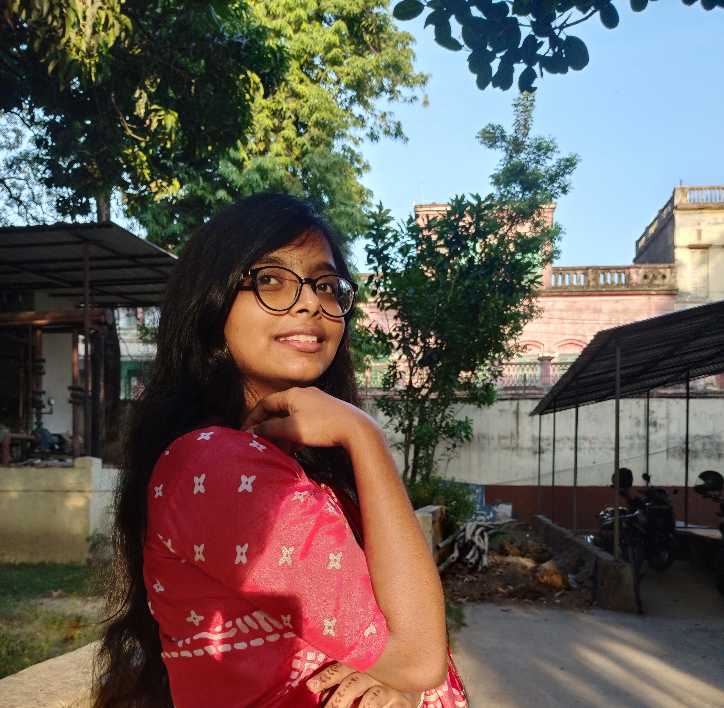Introduction: Music of the Soul
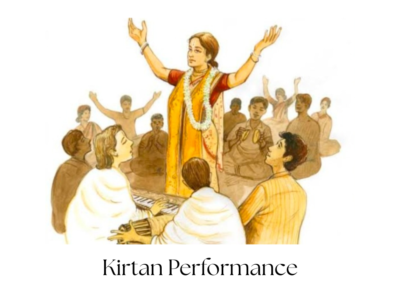
In the heart of Bengal, where rivers flow like poetry and evenings hum with age-old tunes, one sound has continued to echo for centuries, Kirtan, a distinct form of Bengali music, associated with Vaishanavism tradition. But it’s not just a tune, not just ritual, it is an experience. A way of telling stories, feeling emotions deeply, and connecting with something beyond ourselves.
For many Bengalis, Kirtan not only defines their beliefs, it defines how they live. Whether sung solemnly in a rural temple or enthusiastically and in a theatrical style in a nightlong gathering of Kirtan singers and participants, Kirtan holds a communal quality that unites through time, rhythm, play, and devotion. In this way, the life of the spirit and the life of the arts are connected in a way that feels, uniquely Bengali.
Origin: A Movement of Love and Song
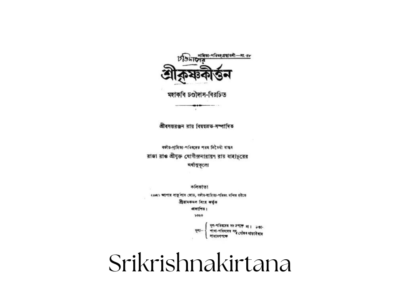
In Bengal, history of music dates back to more than thousand years ago. The first instance of Bengali literature is ‘Charayapada’, which is basically a collection of music compositions. Later on, during 12th century CE, the court poet of Lakshmana Sena, a king from Sena dynasty, was Joydev who opened a new path of Bengali emotion as well as spirit of music. His magnam opus, ‘Geetagovinda’, though in Sanskrit, is believed to be the root of the way of singing, which later termed as Kirtan.
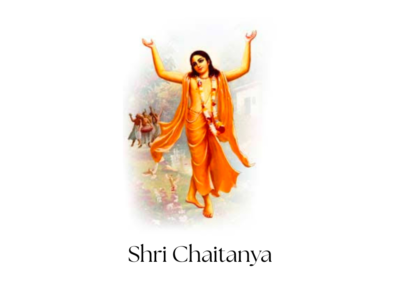
Subsequently, in 14th-15th century, Boru Chandidas composed ‘Shrikrishnakirtana’, being very much influenced by the composition style of both ‘Charyapada’ and ‘Geetagovinda’. This composition strengthened the flow of Bengal’s own distinct form of Kirtan.
But the man who first gave Kirtan its heart and soul in Bengal was Shri Chaitanya Mahaprabhu, a mystic and saint from Nabadwip in the 15th century. He did not just practice devotion, he danced on the streets, singing Krishna’s names with such fervor that entire village would join him. With him came Nama-Kirtan, the pure repetition of God’s name; it was the beginning of what Kirtan would become, a divine song that invited all.
In and around ‘Shrikrishnakirtana’ helped in emergence of the genre of Vaishnava Padavali, a body of lyrical poetry in Bengali and Brajabuli, which added poetic depth to Kirtan. Scholars divide Padavali into two distinct phases; one is Pre-Chaitanya, that is before the birth of Shri Chaitanya and the Post-Chaitanya phase, the time after his death. Some famous Padavali composers were Vidyapati, Gyanadas and Chandidas. These verses are still sung today, carrying with them the emotions of centuries.
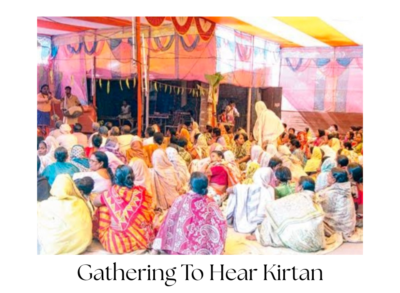
How It Flourished: From Devotion to Celebration
Over time, what began as a form of chanting grew into an elaborate art form. By the 17th and 18th centuries, Kirtan was being performed not just in temples but in homes, markets, and courtyards. In villages, entire night was reserved for these performances. People from all backgrounds would gather, not just to listen, but to feel, to laugh, cry, sing, and surrender.
There was no internet, no microphones, the power of voice, drum, and cymbal. And yet, the reach was immense. Nadia became centre of Kirtan excellence, producing artists whose fame spread far and wide. Various schools of Kirtan (Manoharshahi, Garanhati, Mandarani, Reneti, Jharkhandi, and Dhop) developed over the years, distinguished by its own mood, musicality, and timing.
Although Kirtan started out as a devotional device, it became community theatre, a social interface, and celebration of divine love and human expression.
Variations: Different Faces of the Same Devotion
Kirtan in Bengal is means a lot to many people. While the core is always devotional, the way it’s expressed can vary widely, Like Lila-Kirtan, Nam-Kirtan, Pala-Kirtan, Prarthana-Kirtan, Bandana-Kirtan, Arati-Kirtan and many more. Let’s look at two of the most beloved forms:
Lila-Kirtan: Living the Divine Story
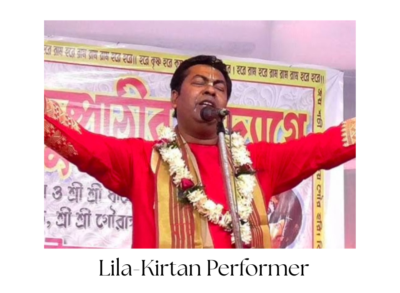
If you’ve ever been part of a Lila-Kirtan, you know it’s not just a performance—it’s a journey. Here, stories from Krishna’s life- his childhood, his mischief, his love for Radha are sung, acted out, and emotionally recreated. Often based on Padavalis, it’s part drama, part music, part meditation. The lead singer, called the gayen, guides the troupe and the audience through waves of joy, longing, and devotion.
Lila-Kirtans are often performed late into the night. The setting is modest, but the effect is powerful. One moment, you’re laughing at Krishna’s pranks, in he next, you’re in tears as Radha expresses her separation. It is the emotional heartbeat of Bengali spiritual culture.
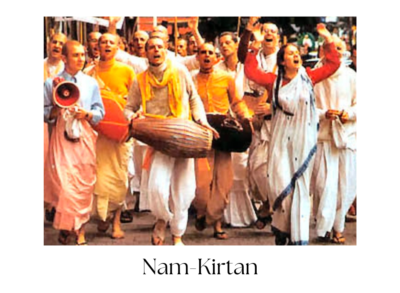
Nama-Kirtan: The Simplicity of Sacred Sound
At the other end of the spectrum lies Nama-Kirtan or Nagar-Kirtan or Sankirtan. It began and flourished with Shri Chaitanya himself. It doesn’t need a story, it doesn’t need costumes or scripts. Just the name of God, chanted over and over, in a rhythm that seems to draw you in and lift you up.
This form of Kirtan is often spontaneous. A few people, a mridanga, some kartals, and a heartfelt call and soon, a crowd joins in. All caste-class-creed-race become irrelevant then. It’s meditative, purifying, and deeply personal. Where Lila-Kirtan paints a divine world, Nama-Kirtan invites you to lose yourself in divine sound.
Kirtan in Popular Culture: From Temples to Films
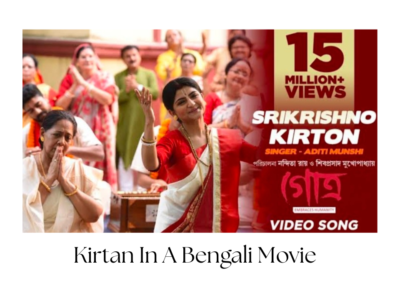
Kirtan’s impact in Bengal has not been limited to religious contexts. The ideas and patterns of Kirtan have developed through the landscape of the general culture. In literature, Rabindranath Tagore was influenced by Kirtan in terms of its poetical lyrical style and spiritual vigor, which are evident in some of his songs and poems. Also, books central to the theme of Kirtan has been popular in current times also.
Kirtan was used in cinema, particularly during the golden years of Bengali films and was used as both a medium to express emotion and spirituality, as well as a representation of the cultural identity of rural Bengal. Kirtan performances are part of movies and daily soaps based on Mahaprabhu Sri Chaitanya, always fulfilling their purpose of representing emotional high points. Now-a-days also, movies and serials don’t hesitate to show Kirtan performances or only the songs to capture the emotional intensity of a scene in itself.
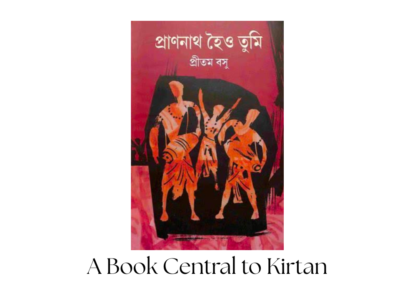
Today, even experimental musicians and fusion bands borrow from Kirtan’s rhythms and structure. On the other hand, performers like Aditi Munshi helped to flourish the tradition of Kirtan, keeping more or less the essence of it. Globally, the concept of devotional singing has gained popularity through the spread of Vaishnava Bhakti, by organisations like ISKON and Gaudiya Math.
Shaping Bengali Identity: The Cultural Core
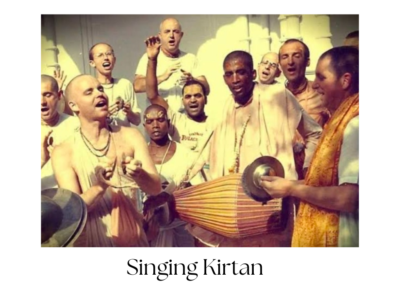
To understand the Bengali spirit, you have to understand its emotional landscape and Kirtan is a big part of that. It’s where intellect meets feeling, where poetry meets music, and where community meets faith. In Bengal, God isn’t just worshipped, he’s loved, teased, longed for. Kirtan gives voice to this personal and passionate relationship with the divine. It shapes how Bengalis express joy, sorrow, and devotion.
It’s also profoundly inclusive. Kirtan doesn’t care if you’re rich or poor, young or old, learned or illiterate. When the singing begins, everyone becomes part of the same rhythm, the same breath, the same spiritual longing.
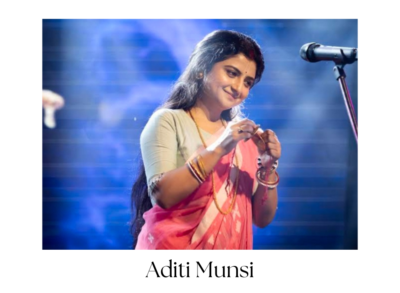
Where It Stands Today: Fragile, Yet Alive
Due to the emergence of digital forms of entertainment, Kirtan faces challenges today like many other traditional art forms. Young people nowadays are not interested in learning the art in its most authentic form. Many experienced Kirtaniyas are facing a shortage of performance opportunities, and rural Kirtan festivals no longer attract large audiences.
Independent artists, cultural institutions, and even universities have taken steps toward preserving and restoring the tradition. They can now be heard through recordings, and showcased at workshops and festivals being held all over the world which is also fueling global appreciation for Spiritual Kirtan Music – however it is often presented in a more westernized manner.
Conclusion: The Song That Never Ends
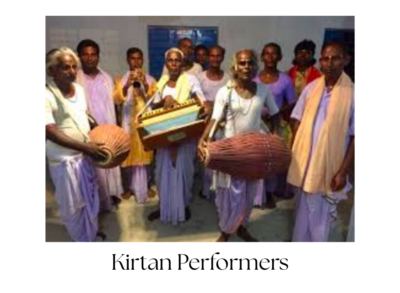
In this rapidly evolving world we live in today, there has simultaneously been an increase in the appeal for the emotional simplicity that kirtans offer. It underlies profound philosophy of being a bridge between self and others which stalks with people parallel to time starting from wars, colonization modernity to migration. It has beautifully withstood transformation not through manuals or recorded means, but because it has left an indelible impression on collective human hearts.
Kirtan will always persist as long as there are singing voices, and anyone to up their hands and open hearts. Kirtan transcends time and history, mirroring the mundane cyclical trip of international spirituality accompanying the louder echoes of the rest of Bengal: ever-nimble, timeless, and infinite.
REFERENCES:
BOOKS:
1. Chakrabarty, Mrigankashekhar, “Banglar Kirtan Gan”, Sahityalok, Kolkata, 1998
JOURNAL ARTICLES:
1. Debnath, Tama, “Padavali Kirtan Of Bengal”, Sangeet Galaxy 7, No, 1 (2018): 5-10
NEWSPAPER OR MAGAZINE ARTICLE
1. Barua, Amal, “Kirtan: Bangla Ganer Ananyadhara” Suprobhat, August 17, 2023. https://suprobhat.com/%E0%A6%95%E0%A7%80%E0%A6%B0%E0%A7%8D%E0%A6%A4%E0%A6%A8-%E0%A6%AC%E0%A6%BE%E0%A6%82%E0%A6%B2%E0%A6%BE-%E0%A6%97%E0%A6%BE%E0%A6%A8%E0%A7%87%E0%A6%B0-%E0%A6%85%E0%A6%A8%E0%A6%A8%E0%A7%8D%E0%A6%AF/
2. Naskar, Krishanu, “Banglar Kirtan Gan” Itihas Tathya O Tarka, April 22, 2023. https://www.itihasadda.in/kirtan-bengal/
WEB PAGE:
1. Banglapedia. “Kirtan”. Last modified August 14, 2014. https://bn.banglapedia.org/index.php?title=%E0%A6%95%E0%A7%80%E0%A6%B0%E0%A7%8D%E0%A6%A4%E0%A6%A8
2. Onushilan.org. “Kirtan”. Last Accessed June 24, 2024, http://onushilon.org/music/gen/kirtton.htm
3. Sobbanglay. “Kirtan Gan”. Last Accessed June 24, 2024, https://sobbanglay.com/sob/keertan-gaan/

